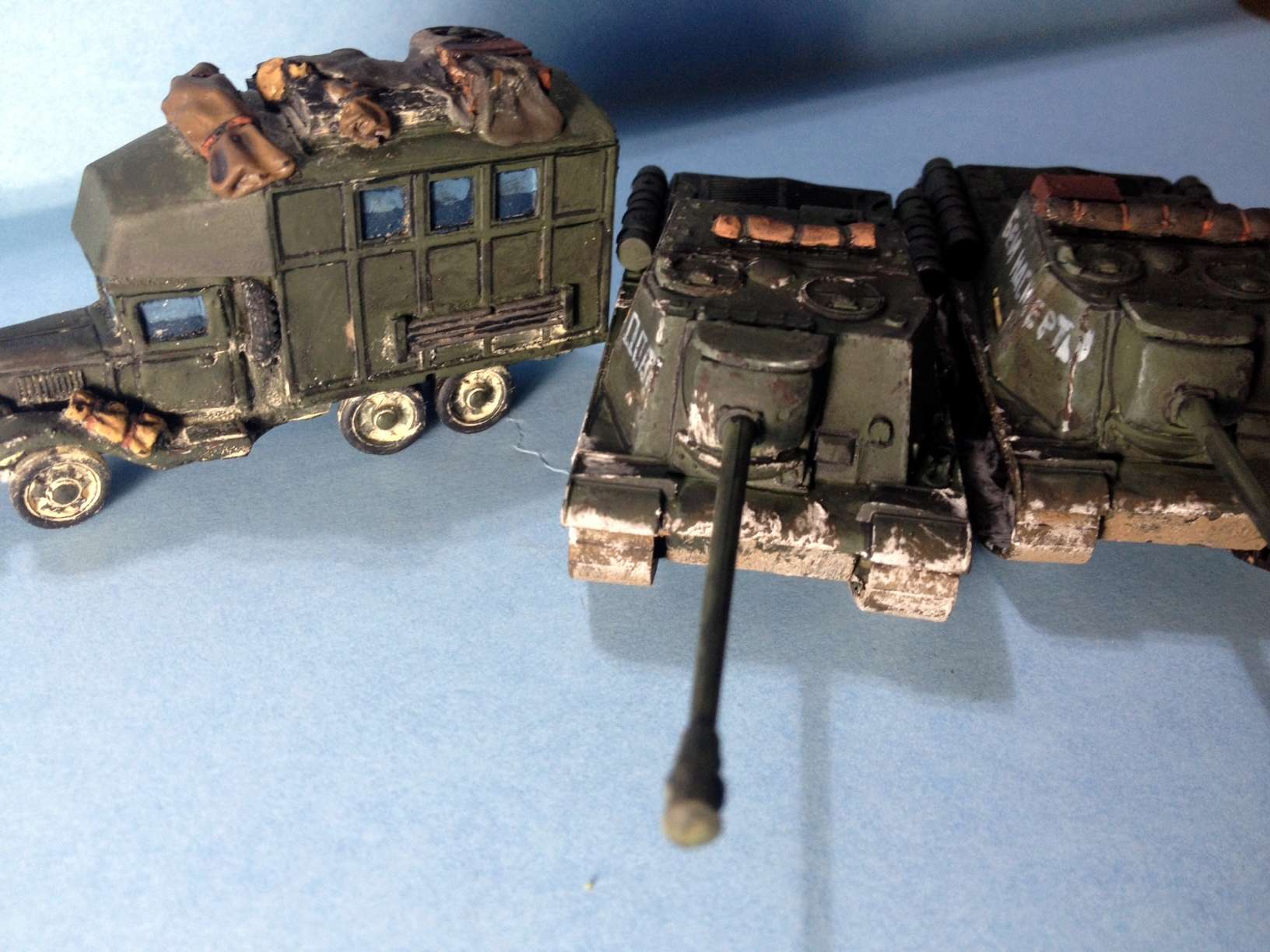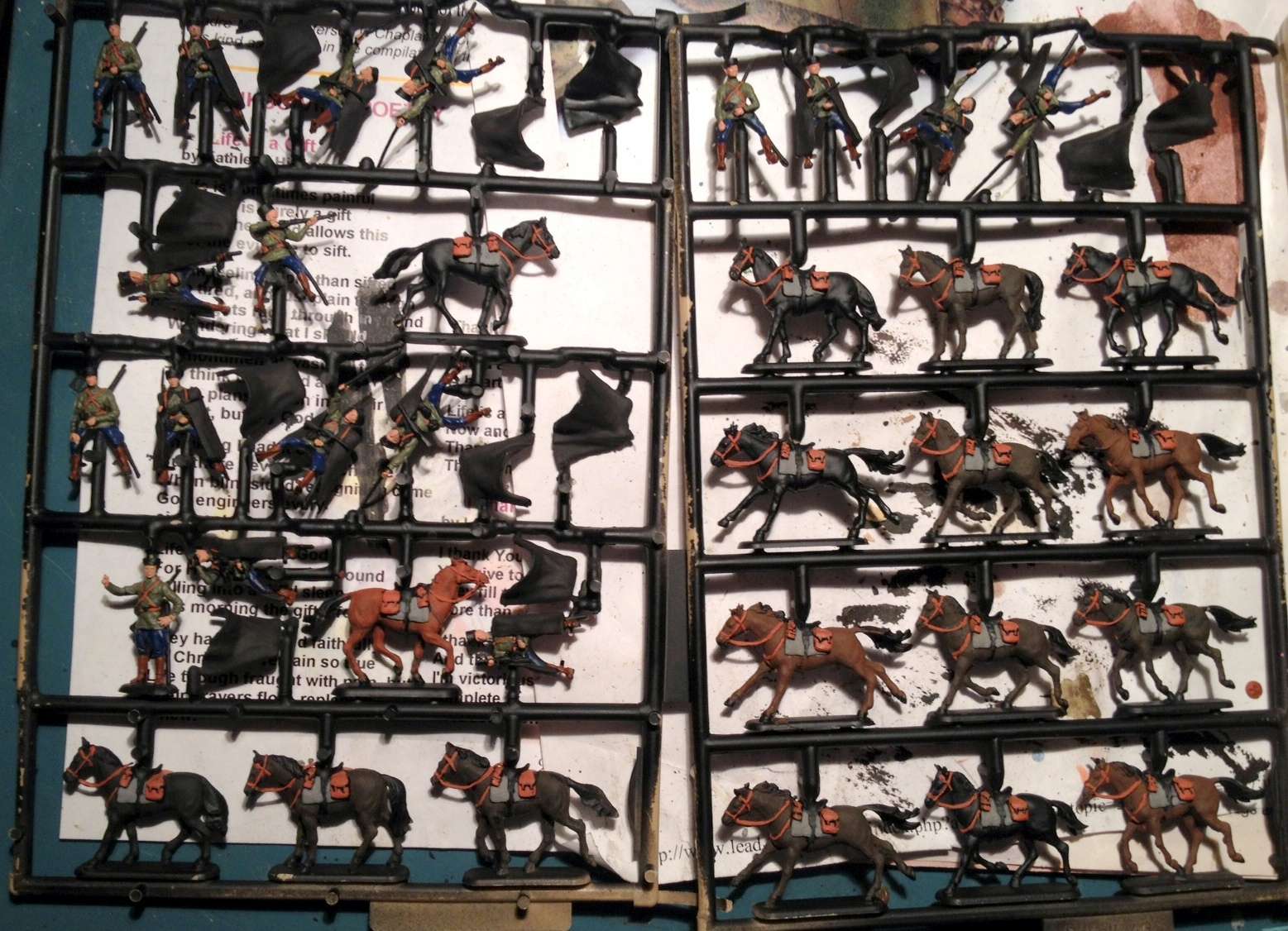Gentle readers may recall how excited I was a few posts back about those sweet looking ISU 122 tanks that I had treated, somewhat overzealously, some opined, with Vallejo pigment. Well, I treated treated them with my usual final step, a spray of Testors Dullcote, and when I saw them yesterday morning, I was horrified to see that where the pigment had not dissolved, it had turned white and now loooked like snow. The same was true of a Britannia resin Soviet command truck that I had also treated with pigment. All three will now require some remediation.
I share this with you because this morning I noticed that my favourite penguin, Thomas, had just finished a beautiful British western desert LRDG chaos buggy and had treated it, quite successfully, I thought, with MIG pigment, and was wondering whether to matt varnish it. Not wanting him to repeat the same mistake, I jumped on the reply button. I think Thomas may try some Vallejo Matte Varnish vice the Testors stuff, so we will see if he has better luck, but for now, the cautionary moral to my sad tale is, don't get yourself in a pigment pickle. Be careful how you finish that model, and maybe do more research than I did.
The season of Lent drawing near, with all its privations, I worked myself into a penitential mood Sunday afternoon by painting leather belts, straps, reigns and tack on 17 Revell Cossacks and their mounts, still left on the sprue. Soon I'll start snipping them off the sprue and seeing if I can get their capes (the bat-like dark things you see on the sprues) fit as advertised. If I can get them done by the end of this week, they will be Entry #6 for the Analogue Painting Challenge, and then a unit of 12 28mm Front Rank Hussars to carry on the theme of Russian February.
God prosper your brushes and bless your die rolls!



NOOOOOoooo! I hope you didn't take the Lord's name in vain when you saw the result ;-) That's a real downer.
ReplyDeleteLovely looking Cossacks, though. 1/72nd scale?
It wasn't a primal scream, more a low moan. I had a friend spray a finished brigade of 20mm Austrian Napoleonics with what he thought was primer and was in fact white spray paint. He thought the white would disappear when it dried. He was a grown man, and he cried.
DeleteThey are lovely Cossacks and yes, 20mm from Revell, OOP now I think.
At least Russian tanks have been known to operate in snow so white is not totally out of place . It is shocking and annoying when it happens though, but not as bad as the time I grabbed white primer instead of dullcote.
ReplyDeleteNice cossacks.
You can fix it with a simple black wash of very deluted black paint and water, it works for me I've had this same issue. It's due to the dull coat braking down in the can.
ReplyDeleteGutted!! I was going to suggest a watered down black wash but Don beat me to it!
ReplyDeleteThat's awfully bad luck Padre. Hopefully Don's suggestion will work for you.
ReplyDeleteBad luck Mike. I always apply pigments after a coat of matt varnish and live with the fact they may rub of during gaming.
ReplyDeleteYou may find this link of use: http://www.missing-lynx.com/rare_world/rw05.htm It's my go to guide for dealing with pigments.]
Cheers,
Pete.
This comment has been removed by the author.
ReplyDeleteThanks Ross. See my comment to Rosbif above, I think we all have a horror story or two, usually at the finishing stage of things.
ReplyDeleteDon, Pete and all: Thanks for the excellent suggestions and Pete for that link, which taught me a few things. Can't wait to get back in the fight and try it again with some PSC T34s that showed up yesterday. Y'all are most helpful and encouraging! :)
ReplyDeleteThose cossacks are looking good so far. My own feeling about the tanks is that they look as though they were pretty busy throughout the spring Rasputitsa, and the resulting accumulation of mud has been allowed to dry. Now, I don't know what colour Russian or Ukrainian mud is when it is dry, but I have seen the New Zealand brand looking very like the colour that appears in your photos. Possibly they are a little bit in the light side, but I would accept that on the grounds that, scaling tendiing to darken colours, one ought to go a couple of shades lighter anyhow.
ReplyDeleteBut perhaps the photo alters the colour from dead white to the pale beige that I'm looking at?